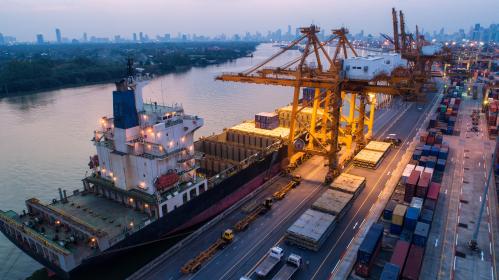Despite often being overlooked amid the appeal of scrappy entrepreneurs and mammoth multi-national companies, middle market firms (with $10 million – $1 billion in annual revenue) are work horses of job creation, innovation, and savvy adaptation in local economies. Middle market activity fosters dense industry clusters, wage growth, and workforce specialization. Hungry for information, connections, markets, and strategies for scaling, these firms are particularly receptive to the advice and resources offered by economic developers.
The power of middle market firms has particularly important implications for international economic development and export promotion. For many of these globally engaged firms, cultivating new international markets and buyers has been a reliable, albeit challenging, path to sustained growth. Middle market exporters tend to experience higher revenues, faster expansions, and greater resilience. However, as a category, mid-size firms have tremendous untapped potential for exporting, with too few regularly considering or taking advantage of their opportunities.
This potential extends to exports accelerating growth of smaller firms into the middle market (by crossing that critical $10 million threshold). The double benefits of more mid-size companies and more traded sector income for the region offer an appealing and valuable return to economic developers. However, economic developers with limited resources must make tough decisions about which firms to select and support through programming. In most cases, export-focused efforts cannot create the minimum conditions required for a firm’s viability. Rather, export assistance works best when it helps established firms with solid fundamentals take on new opportunities and risks, and address problems more quickly and with better preparation, information and support than they might otherwise. Those characteristics are typically found in companies that have already reached a certain scale.
Nevertheless, we can get an exceptional return on our export efforts by distinguishing pre-middle market firms with the will and internal resource mix to accelerate their growth by going global. What do these firms look like?
In my experience, companies best poised to enter the middle market with an exporting boost answer “yes” to most of the following questions:
- Is there evidence that the company is scaling its operations with time? A company with 12 employees founded in 1998 would seem not to be scaling, while one founded in 2015 with the same number of employees is intriguing. Economic developers should consider whether the formula for the company’s success to date can accommodate a growing geographic and/or sectoral reach, and if not, how the firm is adapting.
- Does the company want to grow? So accustomed to the idea that growth is good, economic developers can sometimes overlook whether a firm actually wants to expand. Annual revenue may be “good enough” to meet the needs of owners. A company may have rationally determined its “sweet spot” size, in line with its appetite for risk, capital investment, and personnel obligations. Failing to independently research markets, slow responses to online inquiries, and passivity about offers of assistance are indicators that even a stable firm simply may not be interested in exporting, for which external enthusiasm cannot compensate.
- Does the firm have the internal mechanisms that support sustainable growth? Firms need the supply chain and systems to ramp up production and delivery in an appropriate timeframe. This implies having scalable human resources functions, time, and money to invest in skills-building and to spend on a new geographic or sectoral focus. Economic developers can diagnose needs and recommend specialized assistance, but only internal commitment and action can address these issues.
- Is the firm’s customer base sufficiently diversified to be resilient? If one to three buyers account for more than half of a firm’s annual sales, it is likely overly reliant on these customers. Economic developers should assess whether leaders are actively addressing this vulnerability, for which exporting may be a benefit.
- Do firm leaders plan realistically one to three years into the future? Economic developers should seek to determine whether priorities, timelines, and definitions of success are specific and reasonable. For instance, one indicator might be whether the company leader is prepared to travel in the next four to six months to execute a customized business agenda or attend an event in which she has expressed interest. If not, the firm’s interest may be more aspirational than actionable.
- Do firm leaders evaluate their resources when assessing the accessibility of a new opportunity? A firm may believe it has significant opportunity in India or China, but underestimate the resources needed to protect intellectual property, make repeated visits, or develop a sale over two to three years. Good decision-making requires a clear-eyed assessment of risk, opportunity size and accessibility, and resources.
Good business retention and expansion (BRE) provides the information and opportunity for informed observation to help economic developers answer most of these questions.
Smoothing and speeding ascent into the middle market through exports and other tools can strengthen individual firms and regional economies. Yet, achieving this clarity of mission can be difficult in an economic development culture driven by short-term metrics focused on job creation, investment numbers, and transactional approaches. The benefits of export assistance and transitions from small to mid-size are hard to measure.
Quarter by quarter, very large company projects generating significant investment numbers suggest an economic developer’s influence. Small firm assistance with high numbers of companies served demonstrate level of effort. In the long-term, an increased focus on the foundational work that fosters middle market growth, including global engagement, may be the closest that economic developers can come to truly exerting determinative influence.







Commentary
Exports provide firms a path into the middle market
August 14, 2019